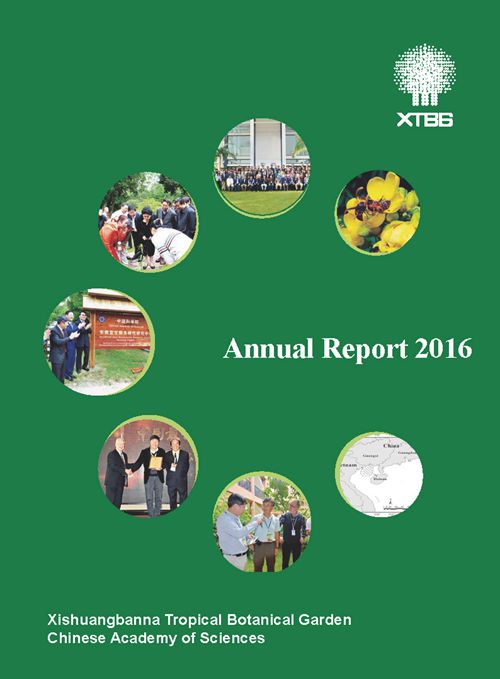The year of 2016 witnessed big development of Xishuangbanna Tropical Botanical Garden (XTBG). In addition to its achievements in scientific research, species conservation, and science communication, XTBG won honor of best Chinese botanic garden 2016 –“Fenghuai Award”, hosted its annual conference 2016, organized the 1st Luosuo River Science Education Forum, etc.
In 2016, XTBG received RMB 81.7 million in research funds from 80 new projects, got 223 research articles published in internationally peer-reviewed scientific journals. The revenue of admission fees from visitors increased, more popular science activities were organized. A total of 1,092 species were successfully introduced in 2016.
Chinese vice Premier Liu Yandong paid an inspection tour to XTBG in December, accompanied by CAS President Bai Chunli and local officials of Yunnan. She encouraged XTBG researchers to shoot frontiers of science and technology and make more achievements in tropical plants and ecological studies. She emphasized the significance of combining independent research with industrial application, encouraging XTBG to study Dai medicine and traditional Chinese medicine and explore precious plant resources. She also talked about the significance of international cooperation and talent cultivation. She wished XTBG to be a first-class botanical garden in the world by 2020.
The Southeast Asia Biodiversity Research Institute of the Chinese Academy of Sciences (CAS-SEABRI) unveiled in October. Since its inauguration in 2015, the CAS-SEABRI has set up four research groups, completed three large-scale field biodiversity investigations, collected 1500 plant specimens of 3500 accessions, observed records of bird and beast species, and 10,000 photos by infrared thermal cameras, found 20 new plant species, 100 new spider species, etc.
XTBG hosted its annual conference 2016 to promote and strengthen the academic exchange and interaction, invigorate academic atmosphere, accelerate the growth of young scientific researchers of XTBG. Scientists, researchers, and students gathered together at the XTBG headquarters for two days of presentations, discussion, and communication.
XTBG also made endeavor to bridge art and science. A lot of exhibitions have been made.
It hosted a week-long Science Festival to showcase the science undertaken by the young research fellows and graduate students in May.
A series of training courses had gone through a process of refinement in 2016. In addition, the series of Chinese Union of Botanic Gardens (CUBG) training courses won applause.
XTBG hosted some international symposium. Its scientists participated in a lot of international academic conferences. Cooperation among national and international colleagues was broadened.
To learn more and have a better understanding on the development of XTBG over the past year, please read our Annual Report 2016.


